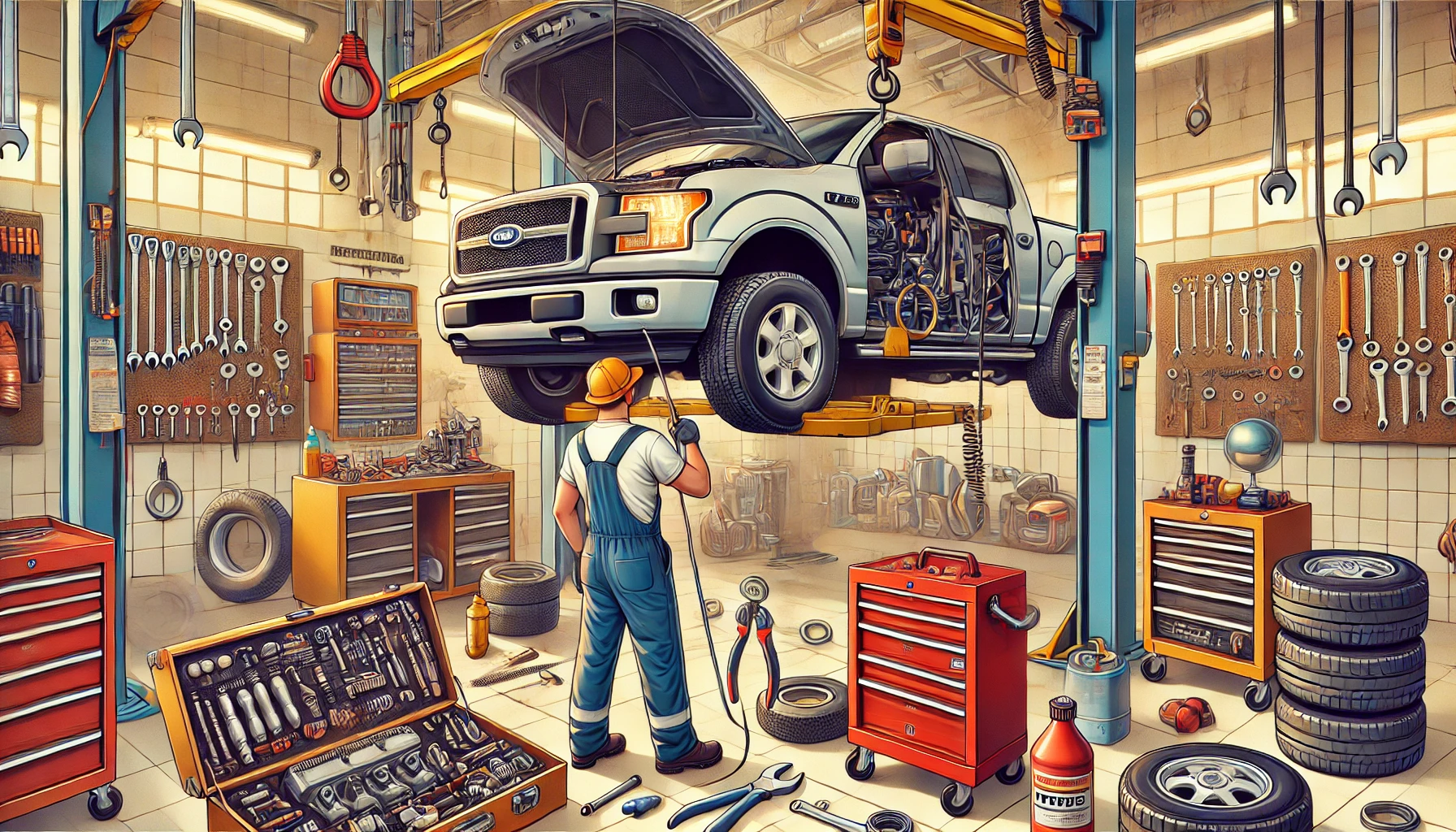Preventive maintenance is a fundamental practice to ensure the safe and efficient operation of any vehicle. It consists of regular actions aimed at preventing failures, increasing the durability of components, and improving vehicle performance. Although some drivers see maintenance as an unnecessary expense, it is a crucial investment to avoid bigger and more expensive problems in the future.
With the increasing complexity of modern vehicles, preventive maintenance goes beyond checking tires and changing oil. It involves a series of detailed inspections that can identify wear or incipient failures in electronic systems, brakes, and even the engine. Therefore, knowing the fundamentals and recommended practices is essential to prolong the lifespan of your car.
This guide was created to present all the fundamental aspects of preventive maintenance, from its importance to the creation of an effective schedule, addressing the main mistakes to be avoided. With this, you will be better prepared to take care of your vehicle and make the most of its performance and safety.
The importance of preventive maintenance in daily life
Investing in preventive maintenance is more than just avoiding the car breaking down on the road; it's about safety, savings, and peace of mind. A well-maintained vehicle significantly reduces the risk of accidents caused by unexpected mechanical failures, such as ineffective brakes or worn-out tires.
In addition, preventive maintenance directly impacts the driver's wallet. Corrective repairs, done when the problem is already advanced, are usually more expensive than a simple periodic inspection. For example, replacing brake pads is much more economical than having to replace damaged discs and calipers due to negligence.
Another important point is energy efficiency. A car with a well-maintained engine, filters, and tires consumes less fuel, reducing operational costs and contributing to a cleaner environment. Thus, preventive maintenance is not only a technical measure but also a way to drive consciously and responsibly.
Main components that require regular maintenance
Keeping each vehicle component in good condition is essential for overall performance. Some of the most critical elements that require attention include:
- Braking system: brake pads, discs, and brake fluid should be regularly checked to ensure safety.
- Tires: proper tire pressure, alignment, and balancing are crucial to prevent uneven wear and ensure grip.
- Oil and filters: changing lubricating oil and air and fuel filters prevents engine problems and improves vehicle efficiency.
- Electrical system: The battery, alternator, and cables should be inspected to prevent unexpected electrical failures.
- Suspension: Worn shock absorbers and springs can compromise the stability of the car, especially during curves or sudden braking.
Performing regular maintenance on these components not only increases the vehicle's durability but also provides greater safety for the driver and passengers.
How to create an effective maintenance schedule
Having a clear and efficient schedule for preventive maintenance is the best way to ensure that no part of the vehicle is neglected. A schedule should be based on factors such as the car's mileage, usage conditions, and manufacturer's recommendations.
- Weekly maintenance: Check tire pressure and fluid levels, such as engine oil, radiator water, and brake fluid.
- Monthly maintenance: inspect external and internal lights, windshield wipers, and signs of tire wear.
- Semi-annual or mileage-based maintenance: perform oil change, replace filters, complete brake inspection, and alignment/balancing.
- Annual maintenance: conduct a general inspection, including emissions analysis, battery condition, and exhaust system.
By creating a customized schedule and strictly following it, you will have a maintenance record that helps predict future interventions and even enhances the vehicle's value in a potential sale.
Essential tools and resources for preventive maintenance
Having the right tools can greatly facilitate preventive maintenance, whether it is done by the driver themselves or at a trusted workshop. Some essential tools include:
- Manometer: to check tire pressure.Keys and sockets: useful for tightening or adjusting components such as screws and nuts.
- Lift or hydraulic jack: essential for inspecting lower areas of the vehicle.Automotive scanner: used to diagnose and troubleshoot vehicle issues.
- Elevador ou macaco hidráulico: essencial para inspecionar áreas inferiores do veículo.
- Scanner automotivo: In modern vehicles, it helps diagnose electronic and mechanical failures.
- Technical manuals: provide detailed information about specific vehicle components.
In addition, apps and software can help monitor maintenance dates and alert about pending items. Using these technological resources makes the process more efficient and reliable.
Common mistakes and how to avoid them in preventive maintenance
Even knowing the importance of maintenance, many drivers make mistakes that compromise the vehicle's performance. The most common mistakes include:
- Neglecting oil and filter change deadlines: delays can lead to engine damage and increased fuel consumption.
- Ignoring warning signs on the dashboard: Warning lights are indicative of problems that should be addressed immediately.
- Not regularly checking tire pressure: Underinflated tires cause uneven wear and increase the risk of accidents.
- Using inferior quality parts: Opting for generic parts can compromise safety and lead to additional long-term costs.
- Skipping basic inspections: Small failures can turn into bigger problems when not identified early on.
To avoid these errors, it is essential to follow the manufacturer's recommendations and not postpone necessary care. This way, you ensure that your vehicle is always in good condition for use.
Long-term benefits of preventive vehicle maintenance
The benefits of preventive maintenance go far beyond avoiding immediate problems. A well-maintained car maintains its original performance for longer, offering greater comfort and reliability to the driver.
In addition, the resale value of the vehicle increases considerably when there is a complete maintenance history. Potential buyers feel more confident in purchasing a car that has been well taken care of, reducing the risk of future problems.
Finally, preventive maintenance contributes to sustainability. With an efficient vehicle, there is less emission of polluting gases, a reduction in the consumption of fossil fuels, and a reduced environmental impact. Therefore, taking care of your car is a practice that benefits you, your family, and the environment.
Conclusion
Preventive vehicle maintenance is an indispensable practice to ensure long-term safety, efficiency, and savings. By adopting a schedule of regular care and investing in appropriate tools, drivers can avoid unexpected failures and prolong the lifespan of their automobiles. With the knowledge gained in this guide, you will be better prepared to face the daily challenges of driving, preserving both your vehicle and your peace of mind.




